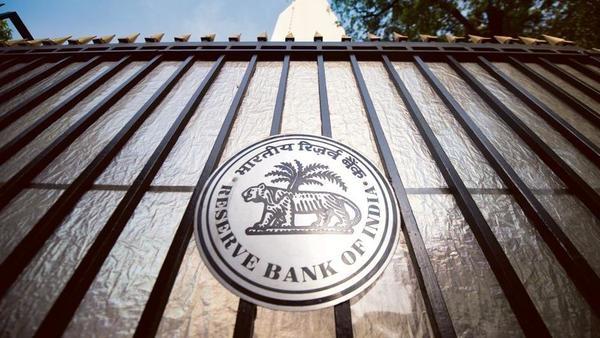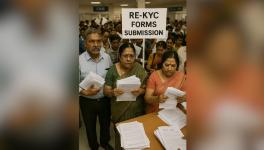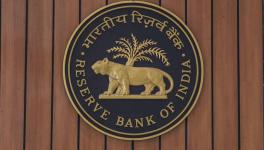Bad Loans: RBI Eases Norms for Defaulting Corporates, Even As NPA Crisis Continues

After tightening norms last year for tackling bad loans that are weighing down India’s banking system, the Reserve Bank of India (RBI) on June 7 issued a revised and significantly diluted version of its ‘12 February circular’ on resolution of stressed assets.
On February 12, 2018, the RBI had issued new rules regarding companies defaulting on loans of Rs 2,000 crore or above (as on March 1, 2018). The banking regulator required that lenders to such defaulting companies would have to implement a Resolution Plan within 180 days — or file for insolvency under the Insolvency and Bankruptcy Code (IBC) within 15 days from the expiry of the 180-day deadline. If a company defaulted after March 1, 2018, then the 180 days would be counted from the date of the first such default.
The circular had also introduced the concept of ‘one-day default’, whereby banks had to identify even a day’s delay in repayment as incipient stress and start a Resolution Plan. The central bank had also scrapped a number of existing debt restructuring schemes for bad loans.
Among other relaxations, the banks will now have the freedom to decide whether they want to take the defaulting borrowers to the insolvency and bankruptcy proceedings or to settle them otherwise.
Also read: RBI Eases Norms for NPAs, Whom Will It Benefit?
These new rules had tremendously displeased the industry and sent various corporates sitting on mountains of bad loans into panic mode as they faced the prospect of being declared bankrupt rather than being given an ever-longer rope.
Associations of corporates from various industrial sectors — including power, sugar and fertiliser — had approached different high courts in the country against this circular. The power sector was leading among the corporate defaulters — just 34 thermal power producers (of which 32 were corporates) had outstanding debt of over Rs 1.74 lakh crore on the verge of becoming NPAs at the time. As of March 2018, it was reported that the total outstanding loans of scheduled commercial banks to the power sector (including renewables) stood at Rs 5.65 lakh crore. The overwhelming majority of these loans had been given out by the public sector banks. Indeed, thermal power producing corporates under the banner of Independent Power Producers’ Association of India was among the major petitioners. The corporate lobbies then went on to the Supreme Court.
Also read: SC Grants Relief to Loan-Defaulter Corporates till Next Hearing
In April this year, the apex court struck down the February circular as “ultra vires” (beyond the powers of).
Now, the RBI has given relief on the ‘one-day default’ rule. While term-loan accounts will continue to follow the one-day default rule, working-capital loan accounts now have an additional 30 days — within which period the banks can ‘review’ these accounts, before they are required to begin implementation of a Resolution Plan.
After the 30-day review period is over, banks must implement a Resolution Plan within 180 days. This gives banks 210 days from the day of first default.
The latest circular is applicable to loan accounts of Rs 2,000 crore and above. But from January 1, 2020, these norms will also stand applicable for loan accounts of Rs 1,500 crore and upwards.
The banks will now have more flexibility in designing and implementing Resolution Plans. As mentioned earlier, the banks will also have the option to settle the borrowers with or without resorting to the insolvency and bankruptcy proceedings.
But all lenders (not just banks) must sign an Inter-Creditor Agreement regarding the final rules and implementation of the Resolution Plan.
Also read: SC To Hear Loan-Defaulting Corporate Power Producers’ Pleas Against RBI’s Insolvency Mandate Today
But, while earlier Resolution Plans required 100% approval from all lenders, now it will require the approval of 75% of lenders by value of the total outstanding credit facilities and 60% of lenders by number.
If banks cannot come up with a Resolution Plan within the 210-day period, they will have to make additional provisions of 20% on the bad loan. Currently, banks have to make 15% provision of the loan amount after 90 days of default. So, the total provisions banks will need to make in absence of a resolution is now 35%.
What’s more, if there is no resolution within 365 days, banks will have to make another 15% provisions.
The RBI also said that any action by lenders to conceal the status of defaulting loan accounts or to evergreen the stressed accounts will attract stringent enforcement actions.
Obviously, the new rules have pleased industry and the mainstream business press alike. Even the Supreme Court did not seem to care that the RBI was trying to extract some accountability out of corporates that are wrecking the country's banking system with mounting Non-Performing Assets (NPAs) and even as banks continue being made to write off colossal amounts of loans.
Also read: So Many Chowkidars, Yet Look at the Scale of Loot
As of December 31, 2018, gross NPAs stood at Rs. 8.64 lakh crore. This is according to provisional data provided by the RBI to the Ministry of Finance, quoted in its response to Rajya Sabha (Question No. 969). “This is 13.6% of gross advances of Rs. 63.21 lakh crore,” as this NewsClick report says.
Meanwhile, in just five years 2014 to 2018, banks have written off NPAs worth Rs.5.56 lakh crore. In fact, 80% of the total bad loans written off in the past 10 years — worth Rs 7 lakh crore — happened in these five years.
Also, forensic audit of over 200 companies that were facing insolvency proceedings showed irregularities worth Rs.1 lakh crore, while bank frauds worth Rs 1 lakh and above increased from 4,693 in 2015-16 to 5,076 in 2016-17, and even further to 5,917 in 2017-18, as the Rajya Sabha was told (more details here).
Get the latest reports & analysis with people's perspective on Protests, movements & deep analytical videos, discussions of the current affairs in your Telegram app. Subscribe to NewsClick's Telegram channel & get Real-Time updates on stories, as they get published on our website.
























